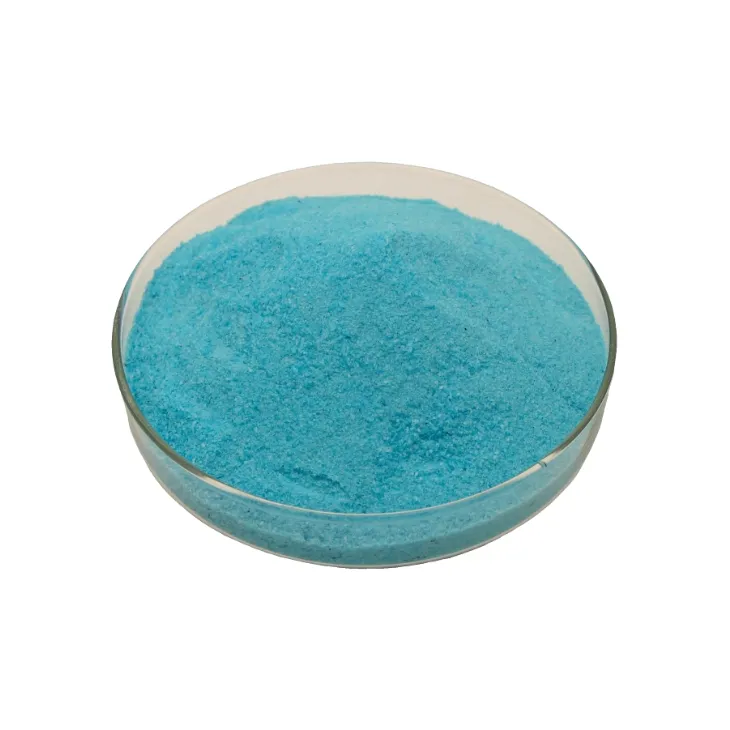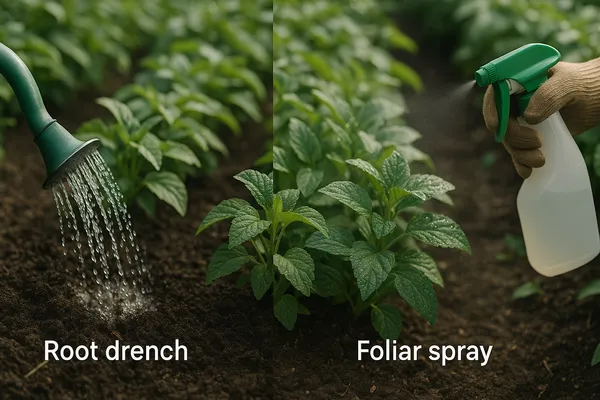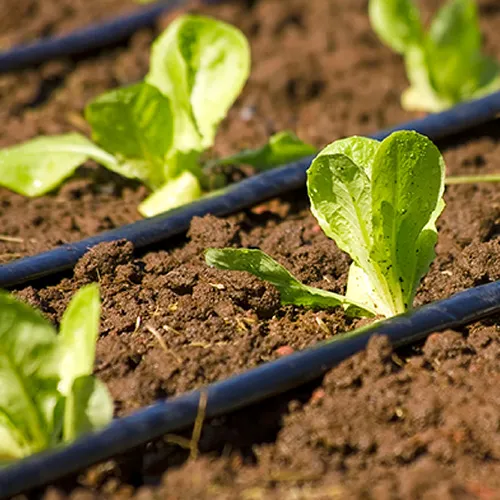Avoid your inquiry is delay response, please enter your WhatsApp/Skype along with the message, so we can contact you at the very first time.
We will reply you within 24 hours. If for urgent case, please add WhatsApp/WeChat:
Warning: Undefined variable $public in /www/wwwroot/lvfertilizer.com/wp-content/themes/hyhadmin/header.php on line 350
Warning: Trying to access array offset on value of type null in /www/wwwroot/lvfertilizer.com/wp-content/themes/hyhadmin/header.php on line 350
,. Or call
Warning: Undefined variable $public in /www/wwwroot/lvfertilizer.com/wp-content/themes/hyhadmin/header.php on line 350
Warning: Trying to access array offset on value of type null in /www/wwwroot/lvfertilizer.com/wp-content/themes/hyhadmin/header.php on line 350
directly.
Struggling with slow plant growth, pale leaves, or weak roots? That can stall your season. Left unchecked, yields drop and time is lost. A simple fix is a balanced, fully soluble feed that plants can drink right away.
Dissolve 20-20-20 water-soluble NPK fertilizer in water and apply as a root drench or foliar feeding on an every 2 weeks schedule during active growth. Mix about 1 teaspoon per gallon for general-purpose use, adjust by crop stage, and avoid overuse to prevent salt buildup.
20-20-20 is a balanced fertilizer with equal parts nitrogen, phosphorus, and potassium. In one formulation, the n-p-k numbers show a balanced npk ratio that suits many crops and stages. It works as an all-purpose plant food when your garden needs steady, balanced nutrition.
Think of it as a general-purpose booster for plant growth. When plants look deficient or after a transplant, this balanced fertilizer sends essential nutrients to plants fast. Many professional growers rely on it across the life cycle of crops for healthy growth and better nutrient uptake.
If you’re comparing options, see this 20-20-20 water-soluble NPK fertilizer for specs and typical use rates.
Explore 20-20-20 TE water-soluble fertilizer

A water-soluble fertilizer dissolves completely in water. Because it is fully water soluble, the solution moves into moist soil and roots take it up quickly. That means quick nutrient delivery and efficient nutrient use with less waiting.
Compared with granular feeds, a dissolved solution improves nutrient availability, especially when roots are actively growing. The solubility of a 20-20-20 water soluble blend helps reduce early-season nutrient deficiencies and speeds nutrient absorption after stress, pruning, or transplant events.
For other balanced options and ratios, see water soluble NPK fertilizer 12-12-36 for fertigation programs.
Water soluble NPK fertilizer 12-12-36
Use this simple mixing table to match the amount of fertilizer to stage and goal. Start at the low end and increase only if plants stay pale or growth lags.
| Crop stage or use case | Target goal | Mix rate (per gallon) | Notes |
|---|---|---|---|
| Seedlings and young starts | Gentle start | 1/4 teaspoon | Every 2 weeks; watch for tender roots |
| Vegetative growth | Build green foliage | 1 teaspoon | Root drench for robust root development |
| Pre-bloom support | Balanced nutrition | 3/4 teaspoon | Ease into bloom; do not over-apply |
| Recovery after transplant | Stress relief | 1/2 teaspoon | Add once, then return to routine |
Tips:
For flowering programs that lean higher in P and K, review water soluble fertilizer 15-30-15 as a balanced formula option for bloom transitions.
Water soluble fertilizer 15-30-15
Key glossary touches you will see on labels:
Root drenches feed the soil zone, supporting steady uptake through roots. Foliar feeding delivers a quick nutrient mist to leaves and can be useful when the plant’s needs spike or roots are stressed. Use foliar sprays at low strength and cover both upper and lower leaf surfaces to support nutrient absorption.
Foliar feeding is not a replacement for soil programs. It is a booster for short windows, like cool spells or recovery after wind damage. Done right, it can help correct a deficient look faster than roots alone.
For fertilizers designed for spray lines and fertigation, consider water-soluble fertilizer for drip irrigation programs.
Water-soluble fertilizer for drip irrigation

Seedlings and fresh transplants need gentle, even feeding. A diluted 20-20-20 helps early root development without pushing soft, leggy growth. Start light, then step up as stems thicken. Keep an eye on plant health as you increase.
During vegetative growth, the equal parts profile supports leaves, stems, and roots at the same time. Because the solution is fully soluble, it does not leach as quickly in well-managed media, and plants see a quick nutrient response after each application.
For high-P starts or early rooting, some growers use 10-52-10 water-soluble as a brief starter before returning to 20-20-20.
Water-soluble fertilizer 10-52-10
20-20-20 supports blooms, flower set, and canopy strength in many ornamental plants and fruit trees. Its balanced npk profile helps when the goal is steady growth with consistent color and structure. If you need to push flowering or fruiting, switch temporarily to a bloom-leaning ratio, then return to a balanced program.
Because each crop and soil is different, watch the canopy for clues. Leaves should be a deep green foliage tone without tip burn. If new growth looks pale, increase slightly. If you see salt crusts, back off and flush.
For bloom-stage support, see our water soluble fertilizer for flowers selections tailored to color and sizing.
Water soluble fertilizer for flowers
Fertigation brings nutrients straight to roots through irrigation systems and drip irrigation lines. Because 20-20-20 is water-soluble, it moves evenly with water and maintains uniform feeding. That helps efficient nutrient use and can reduce nutrient runoff when calibrated.
Always strain your stock solution to keep lines clear. Calibrate EC to your crop and medium. Low, frequent feeding beats heavy single shots. This improves nutrient uptake and keeps nutrient availability in the sweet spot.
For program design and alternatives, compare our water soluble fertilizer for drip irrigation ratios by crop.
See fertigation-ready formulas

For a houseplant collection and other indoor plants, mix lightly and feed monthly in bright seasons. Skip or reduce in low light months. Wipe leaves before sprays to avoid spotting and test one leaf first if you try foliar feeding indoors.
Keep containers draining freely so nutrients do not leach out all at once. Water to slight runoff, then let the medium breathe. A steady routine prevents swings that stress roots.
If you prefer a gentler start for containers, a water soluble plant fertilizer with a softer ratio can help.
Water soluble plant fertilizer options
Even a good program can go wrong with too much. Excess feeding causes salt buildup and can burn tips or roots. If this happens, flush with clean water and wait before feeding again. Measure EC if you can. Keep an eye on any nutrient runoff and avoid puddling near wells or drains.
If plants still look deficient, increase only a little. Remember that media, temperature, and light affect nutrient absorption. Your goal is steady color and growth, not a sudden spike.
Need a custom pivot during the season? Consider custom fertilizer blends designed around your crop and water.
Custom fertilizer blends
Store your 20-20-20 in a sealed bag in a dry place. Keep away from moisture so each granule keeps its flow and dissolves on command. Reseal after use. Keep away from children and pets and label your mixes.
When mixing, add powder to water and stir to dissolve. Do not mix concentrates unless you have clear instructions. Rinse sprayers and watering cans after use so residue does not harden.
For high-nitrogen supplements in a season plan, some programs include ammonium sulfate fertilizer alongside soluble feeds.
Ammonium sulfate fertilizer
A 20-20-20 label shows each major nutrient in equal parts. That is why it is often called a purpose plant food for mixed plantings. Labels also list any micronutrient additives. These trace elements fine-tune growth and close small gaps.
Both types have value in a season plan.
| Type | How it feeds | When to choose |
|---|---|---|
| Water-soluble | Instant delivery with strong uptake | When you need a quick nutrient boost or precise control |
| Granular | Slower release as particles break down | For base feeding, long beds, or low-maintenance cultivation |
Note: A granular base can pair well with in-season sprays.
Use the chart below as a simple visual of a balanced program across the growing life cycle. Keep rates light and adjust to your crop.
Relative feeding across stages
Seedling [█]
Vegetative [████]
Pre-bloom [███]
Bloom and set [██]
Sizing and finish [██]
This captures the idea: more during prime growth, less during finish. Always watch the crop and the soil.
Can I use 20-20-20 on young seedlings?
Yes, at very low strength. Start with 1/4 teaspoon per gallon as a mild plant fertilizer, then assess response.
Is 20-20-20 safe for edible crops?
Used as directed, yes. Follow label rates, avoid overspray on harvest days, and prevent nutrient runoff into waterways.
What if my plants still look pale after feeding?
Increase slowly. Pale growth may also signal low light or cool media. Do not assume more fertilizer is the only fix for a deficient look.
Can I mix 20-20-20 with other products?
Many mixes are fine, but always jar-test first. Watch compatibility and pH. Some additives change solubility.
Is foliar feeding better than soil drench?
Use both. Foliar is faster for emergencies; drench is steadier long-term. Keep foliar dilute to protect leaves.
How does this compare to brands like Miracle-Gro?
Balanced feeds with similar ratios work in similar ways. Many gardener guides cite products like miracle grow or miracle-gro as examples; always follow your label and crop targets.
Do
Don’t
A grower ran two bays of tomatoes. One bay used water-soluble 20-20-20 at 1 teaspoon per gallon every other irrigation; the second bay used water alone. After six weeks, the fed bay showed thicker stems, faster set, and uniform color. Harvest weight rose by 12 percent, with smoother size. The fed bay also recovered faster after pruning, a sign of healthy nutrient absorption and consistent nutrient availability.
While 20-20-20 covers most needs, certain crops want different ratios at certain stages. For instance, young fruiting crops may like higher P early on and higher K near finish. That is when you might switch briefly, then return to a balanced plan that keeps canopies strong.
Internal link: Browse our range to match stage-by-stage shifts or work with our team as your npk fertilizer supplier to align with your water and media.
Trusted NPK fertilizer supplier
Respect water, soil, and neighbor spaces. Apply only to moist areas, avoid windy spray days, and never dump leftovers in drains. You feed crops to feed people; good stewardship keeps land strong season after season.